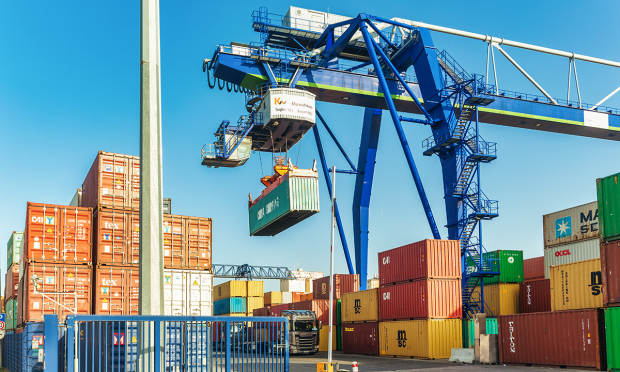TradeLens Sends Europe’s First Electronic Bill of Lading

If there’s one blockchain project that truly shows what the technology is capable of, it’s TradeLens, which has connected nearly every part of the global shipping industry.
Created in 2018 by container shipping giant Maersk and IBM Blockchain, the effort launched amid a mix of high expectations as well as a raft of equally large obstacles. For its part, TradeLens wanted to create a blockchain-based supply-chain-management tool that would convince all the competing players in all segments of the industry to work together to trust the incredibly complex exchange of information needed to make the business of moving widgets around the world flow smoothly to a distributed ledger.
That includes shipping lines, of course, but also port operators, customs agencies, railroads and trucking firms, industry software developers, and the financial services providers that make sure everyone gets paid.
Read more: TradeLens: Transportation Transformation or Quixotic Quagmire?
Uptake of the project has been slow, but according to a TradeLens blog post, the shipping company Roberto Bucci recently selected TradeLens for the first electronic bill of lading (eBL) transaction in Europe.
With offices in Genoa, Naples and Salerno in Italy, as well as in Britain, Bucci is one of the main transporters of food and other goods in Europe and Africa.
According to the post, Bucci uses INTTRA (operator of the world’s largest container freight network) to submit shipping instructions and place bookings mainly on cost, insurance, and freight (CIF) — a process that involves waiting for approval by the shipper before printing out original bills of lading to send along the supply chain.
The release instructions are sent once payment is received by the shipper, which can happen a few days before arrival — or even at the unloading port.
The original bill of lading serves as the receipt of cargo, evidence of a contract of carriage and title, but the manual, paper-based processes used today are ripe with inefficiencies and risk. The issuance, transfer and surrender of it OBL require the handling and physical transfer of documents by multiple parties at origin and destination, resulting in a lack of visibility, unnecessary costs and delays, and potentially lost documents.
The TradeLens eBL
The TradeLens eBL, underpinned by blockchain, will fully digitize and streamline the BL process, eliminating frictions and reducing costs.
“TradeLens eBL had the solution, without changing the way we’re doing business, using our standard shipping instructions channel. In one click the originals were surrendered back to the carrier and the carrier’s system was updated,” according to Bucci’s Carmen Arianna.
Challenges
In theory, the transit time from Naples to Africa is approximately 20 to 25 days, and speeding up the release time of the original bill of lading is critical.
The time it takes to wait for the shipper’s instructions, print the full set and send it by courier to the shipper, who sends it back to the consignee, will increase the risk of the delay in the release of the cargo and the potential for demurrage and detention costs.
See also: Shipping DLT TradeLens Touts Q2 Integrations, but Few New Users
The handling of the telex release is not a fully automated process within the carrier’s system. Therefore, the query response time could take anywhere from two hours to more than one working day on average.
“The turn time needed to process a standard telex release request was not satisfying our customers. At destination, they were impatiently waiting to receive our confirmation, especially when the cargo was about to arrive,” Arianna said.
With TradeLens eBL, the carrier system is updated automatically with the surrender of the original bill of lading at the carrier’s office. Without having to wait for the shipper or freight forwarder’s confirmation, the consignee can confirm the status on the carrier’s website and request the delivery order immediately.
Speed and Transparency
According to TradeLens, eBL use benefits all parties in the supply chain. Shippers save time and money on courier costs.
Carriers receive systematic, programmatic transfers of the bills from the TradeLens system, all underpinned by blockchain, removing a manual process that takes anywhere from three hours to two days on average and avoiding additional email communications because of potential delays.
Consignees minimize delays and risk of demurrage or detention. The eBL saves 4 days wait for a courier pack from the shipper and the $100 cost of surrendering the bills to the carrier’s office at the destination.
“We had a seamless experience, and efficient and smooth onboarding joined with an easy-to-use platform. With this solution, we believe we can become a leader in the sector regarding the speed in the container release at destination,” said Arianna.
TradeLens is an open and neutral industry platform underpinned by blockchain technology and supported by major players across the global shipping industry. The platform promotes the efficient, transparent, and secure exchange of information to foster greater collaboration and trust across the global supply chain.
As adoption accelerates, slowly but surely, the platform may yet realize its potential.